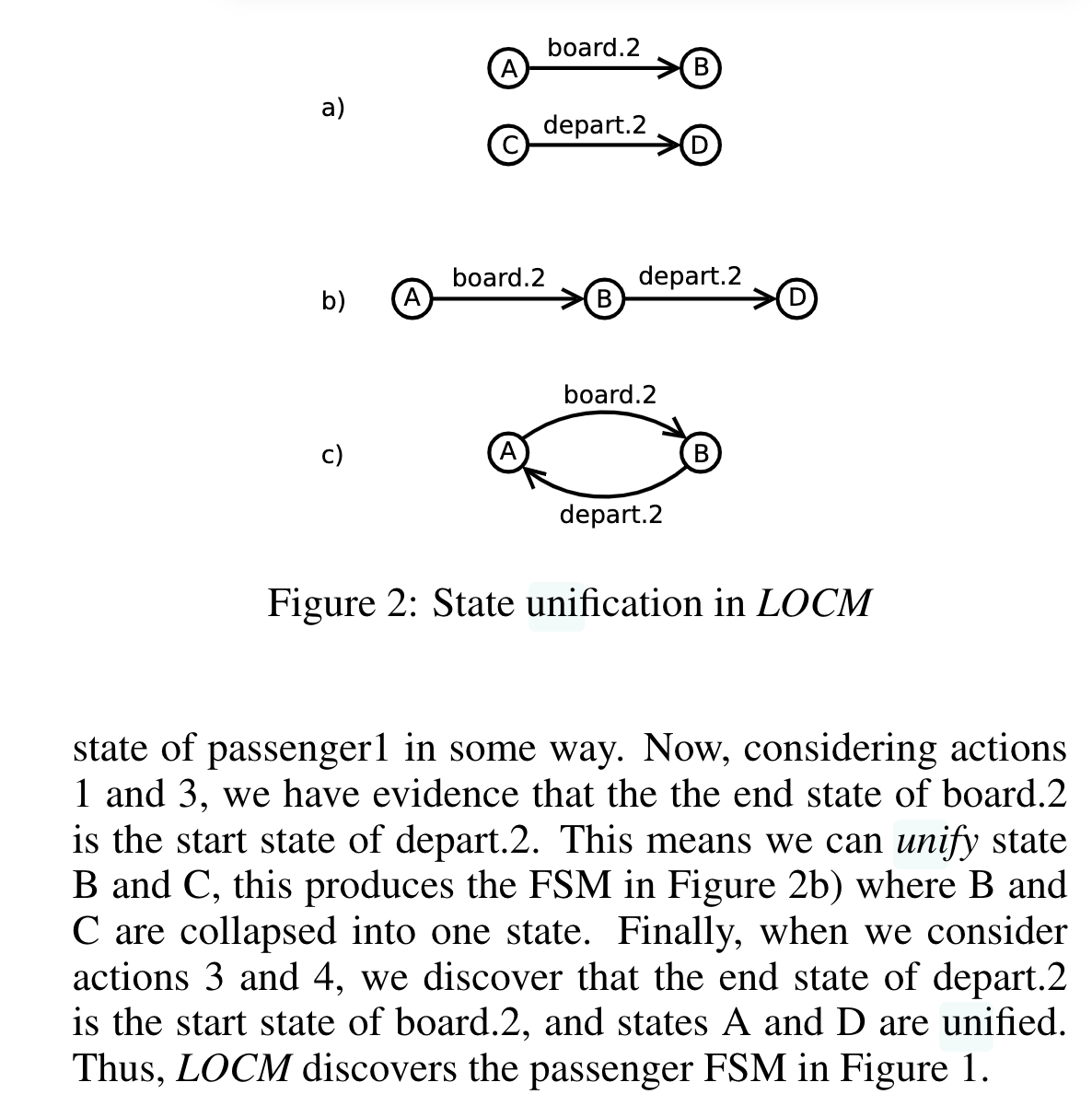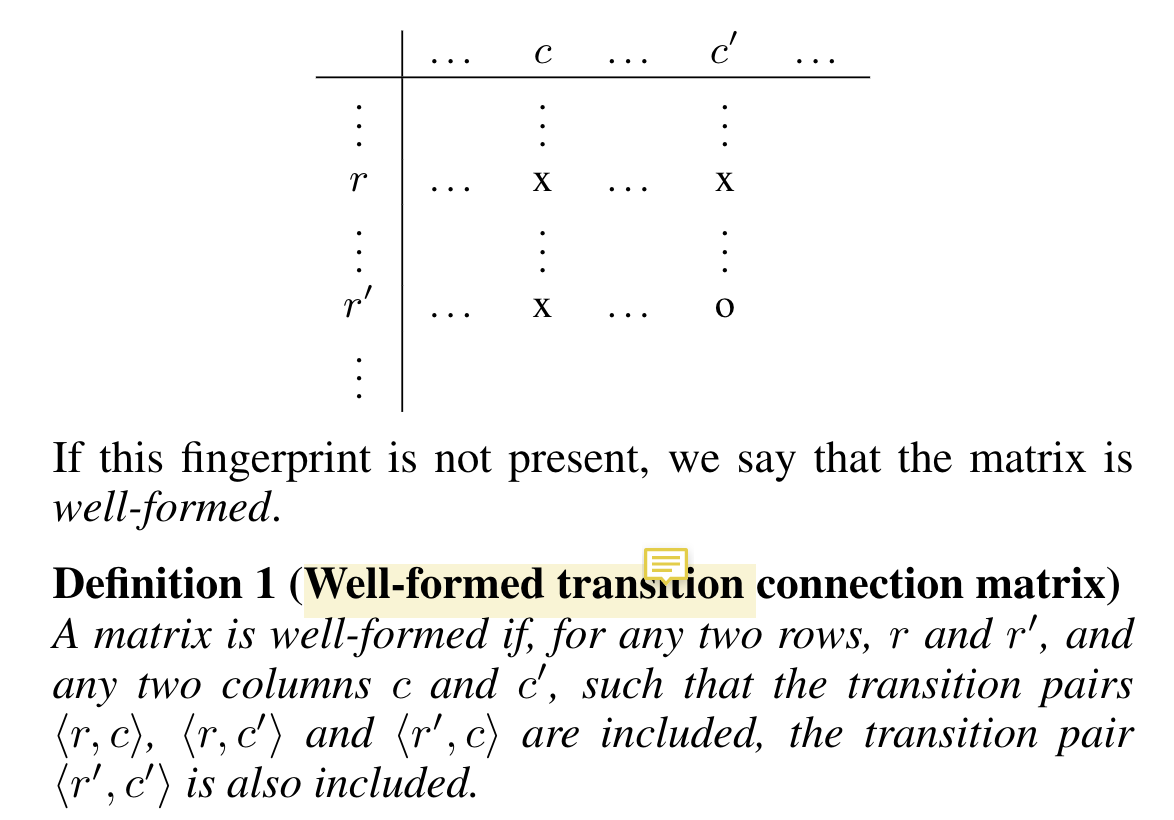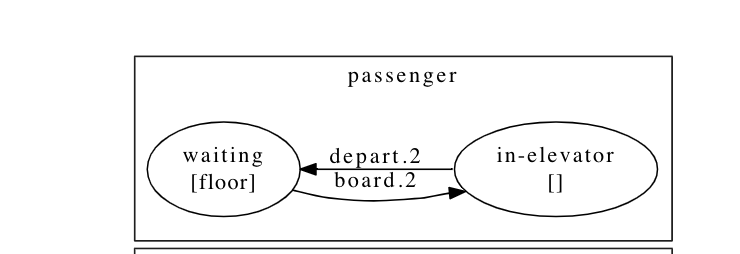[TOC]
- Title: Generalised Domain Model Acquisition from Action Traces (LOCM2)
- Author: Stephen Cresswell et. al.
- Publish Year: 2013
- Review Date: Mar 2022
Summary of paper
Motivation
One approach to the problem of formulating domain models for planning is to learn the models from example action sequences.
This work extended LOCM by allowing multiple parameterised state machine to represent a single object.
In other words, it is possible to automatically infer the underlying transition system from sample action sequences of the domain. Using such an approach removes the necessity for the domain expert to also be an expert at modelling transition systems.
improvement from LOCM to LOCM2
Specifically, they allowed the separate aspects of an object’s behaviour to be represented by separate state machines.
what is the essential strategy for LOCM2
The strategy is to include a state machine with all of the transitions for the sort (as in LOCM), but to additionally check for holes.
Given that holes indicate behaviour missed in the LOCM analysis, further analysis is performed with the aim of selecting valid subsets
Some key terms
holes
They refer to a transition pair not observed in the example sequence, but filled in by generalisation (unification) process.

well formed transition matrix definition

sort
refers to a collection of states of one object
e.g.,

Incomprehension
need to read LOCM paper to understand the whole thing.